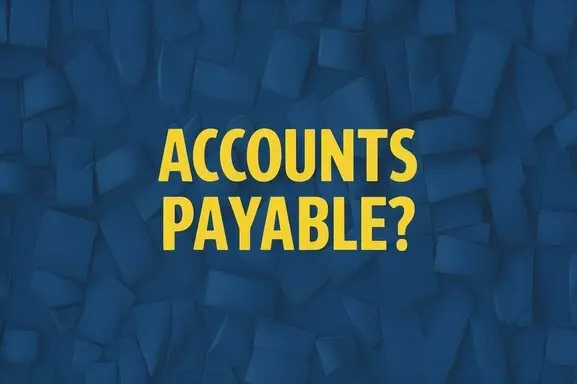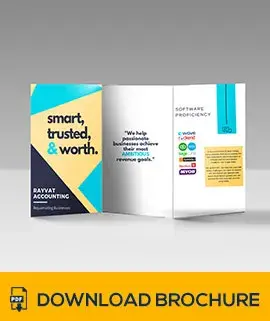Can You Explain End To End Process Of Accounts Payable?

Accounts payable (AP) refers to the amount of credit that a business has used to purchase the products and services of its suppliers and vendors. It is therefore very important to achieve the best of the accounts payable management to foster good relations with suppliers, to be able to take advantage of the prompt payment discounts and stability of the organization’s cash flows.
This post will explain the end-to-end accounts payable process to help the readers better understand it.
Initiating a Purchase
The typical AP cycle starts whenever an employee decides to obtain something from a seller – whether it be equipment, supplies, or services. Common examples include:
- The production of products that require manufacturing of some sort or other.
- All kinds of items used in the office such as papers and pens.
- Services that form part of marketing such as graphics design
- Services such as cleaning, sanitation, and disposal of wastes and other related amenities.
The employee gets the purchase approval through a formal purchase order (PO) or requisition form. These entries contain details of the vendor, the type or kind of items that were ordered, the quantities, the prices, the discounts offered, the methods of payment, and shipping, among other issues. The correct clearance through procurement solutions must be made before creating a PO.
Receiving Goods & Services
After the supplier has made the delivery, the receiving process ensures that all the items that have been received in the organization match the original purchase order. Employees inspect deliveries for:
- Accurate quantities
- Acceptable quality
- Correct items ordered
- Damage during shipping
As a result of delinquent invoices, any problems are recorded by employees for further discussion with accounts payable or the supplier. Otherwise, they formally agree to take orders by signing for delivery receipts or documenting them in the accounts. This informs the accounts payable that it is okay to pay for the products or services that have been received.
Processing Invoices
Customers release invoices that demand payment for the delivered goods or provided services. Purchase orders should include purchase order numbers, supplier name and address, description of goods or services ordered, quantities, agreed-upon prices, date of payment, and details of when and where payments should be sent.
It is the duty of accounts payable employees to check the supplier invoices against the PO and the receiving documents. Any issues with the quality or pricing of the items must be detected and rectified before payment is made. Minimizing the input of invalid invoices into the accounting system is also achieved once invoices are validated.
Scheduling Payments
Suppliers issue invoices and provide due dates for payments whereas the actual timing of payment is decided by the company based on their overall cash flow requirements. Common options include:
- The exact date of repayment is another factor that is likely to make it costly to borrow this form of financing.
- Anticipating to make a payment a few days in advance to get some extra cutoff points.
- Stretching the time between payment and then going into the additional charges period
Accounts payable specialists coordinate payment for invoices in a way that at once enables the company to reap early payment discounts and preserve good working relationships with suppliers while avoiding unnecessary and costly cash spending.
Making Payments
There are several methods to pay approved supplier invoices:
Checks – These are printed and distributed to vendors as a form of payment.
ACH transfers – A method of electronically transferring money directly from the company’s bank account.
Purchasing cards – These are the cards that are in the name of the company and are used for purchases that offer bonus reward points.
Wire transfers – The most common form of payment that is immediate bank transfers mostly used for large amounts.
Virtual cards – Temporary card numbers for protected payments and convenience.
It records all things like the date paid, how paid, check/ref no., and who approved payment in the accounts payable system.
Payment Reconciliation
In this method, suppliers capture the amounts paid to the company for all the cleared invoices in their ledgers. However, some variations can exist, and therefore, accounts payable performs the task of reconstruction as a form of control.
This entails the practice of making suppliers send statements to the buyer detailing issues of invoice issued, amount received, discounts claimed, amount in dispute, credit given, and balance due. Accounts payable considers it to be internal payment records and the organization will look into the differences.
Managing Disputes
However, even with high levels of cooperation, there will always be disagreements involving factors such as differences in price, quality issues, or delayed delivery. Both functions of procurement and accounts payable maintain regular communication with the suppliers to address the problems in a delayed or early manner to get the solutions through negotiation or compromise which is supported by the PO and contract.
If disputes drag on, accounts payable may need to take actions like:
- Installments all or partial on the amounts that are not disputed
- These measures include the waiver of penalties for delayed payments during the investigation.
- Paying will only be done, temporarily, while waiting for the solution to the problem.
The objective is to resolve disputes and conflicts in as friendly and efficient a manner as possible to maintain the supply chain relationships.
Reporting & Analytics
It is also worth understanding that accounts payable does not only make payments. It also generates valuable reports and analytics for executives and other departments including It also generates valuable reports and analytics for executives and other departments including:
- Supplier spending summaries – Supplier expenditures details Vendors with high levels of leverage receive the largest payouts. This makes it easier for procurement to negotiate for better terms and conditions when making contractual renewals.
- costs – How many supplier invoice discounts from early pay were captured, and how much does dynamic payment scheduling save? This establishes the dollar figure with which accounts payable contribute to the balance sheet of an organization.
- Costs – Cost savings are exhibited by the ability to process high-volume invoices and avoid the accumulation of large invoice backlogs for AP employees. This indicates the area that may require change which will lead to improvements in the process.
- Expense forecasting – this involves the use of past data that shows specific expenses to help design a more realistic budget for the next year. Other groups employ these spending estimates for prospective planning.
In Summary
In other words, handling accounts payable effectively brings immense benefits to an organization as it ensures good relations with vendors, optimizes working capital, ensures that available discounts are taken, and also provides valuable spending data. This kind of presentation gives an idea about how much effort and resources are invested in an ideal AP process. It is in the best interest of the finance team as well as organizational performance to find the most effective way to manage these closely related processes.
Contact us here for Accounts Payable Services now!

